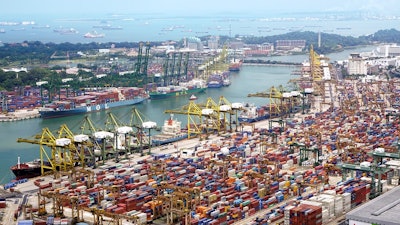
As of October 18, 2018, the ocean rate for shipping bulk grain, from the U.S. Gulf to Japan, was $49.75 per mt, 13% above the same period last year and 16% higher than the beginning of the year. The rate from the PNW to Japan was $27.75 per mt, 9% and 16% above the same period last year and the beginning of the current year, respectively.
Both rates are at their highest levels since the beginning of the year. Based on major market indicators, Drewry forecast a positive outlook for dry bulk market in October. The Chinese government’s efforts in pursuing expansionary policy, and boosting investment in infrastructure, will drive up steel and aluminum production and increase the demand for bulk vessels.
According to an August report by Drewry, the Chinese government reduced reserve requirements for banking and injected a record $73.8 billion into the financial system, through the medium-term lending facility. In addition to increasing spending on infrastructure, the Chinese government also reduced taxes to encourage private investment.
These actions, collectively, may mitigate or soften the impact of the trade rift on steel consumption. Unlike in 2017, the Chinese government is not planning to place any restriction on steel production this winter.
As the winter approaches, there will be a rise in coal restocking in Asia and Europe, due to increased electricity consumption and growing heating demand. Also, the approaching planting season in South Asia may boost fertilizer imports, leading to a robust minor-bulk trade.
Finally, as the International Maritime Organization’s (IMO) deadline on the regulation of sulphur emission is fast approaching, some vessel owners are scheduling to retrofit their vessels with scrubbers to make them IMO compliant. This may create a short-term supply crunch as vessels are taken off operation for weeks at a time.
All of these market indicators could put upward pressure on ocean freight rates for shipping bulk commodities, including grains, in the near term. However, it is very likely that China will experience El Nino in December, which may boost hydro-electric power generation, consequently dampening the demand for coal and putting downward pressure on ocean freight rates.

















